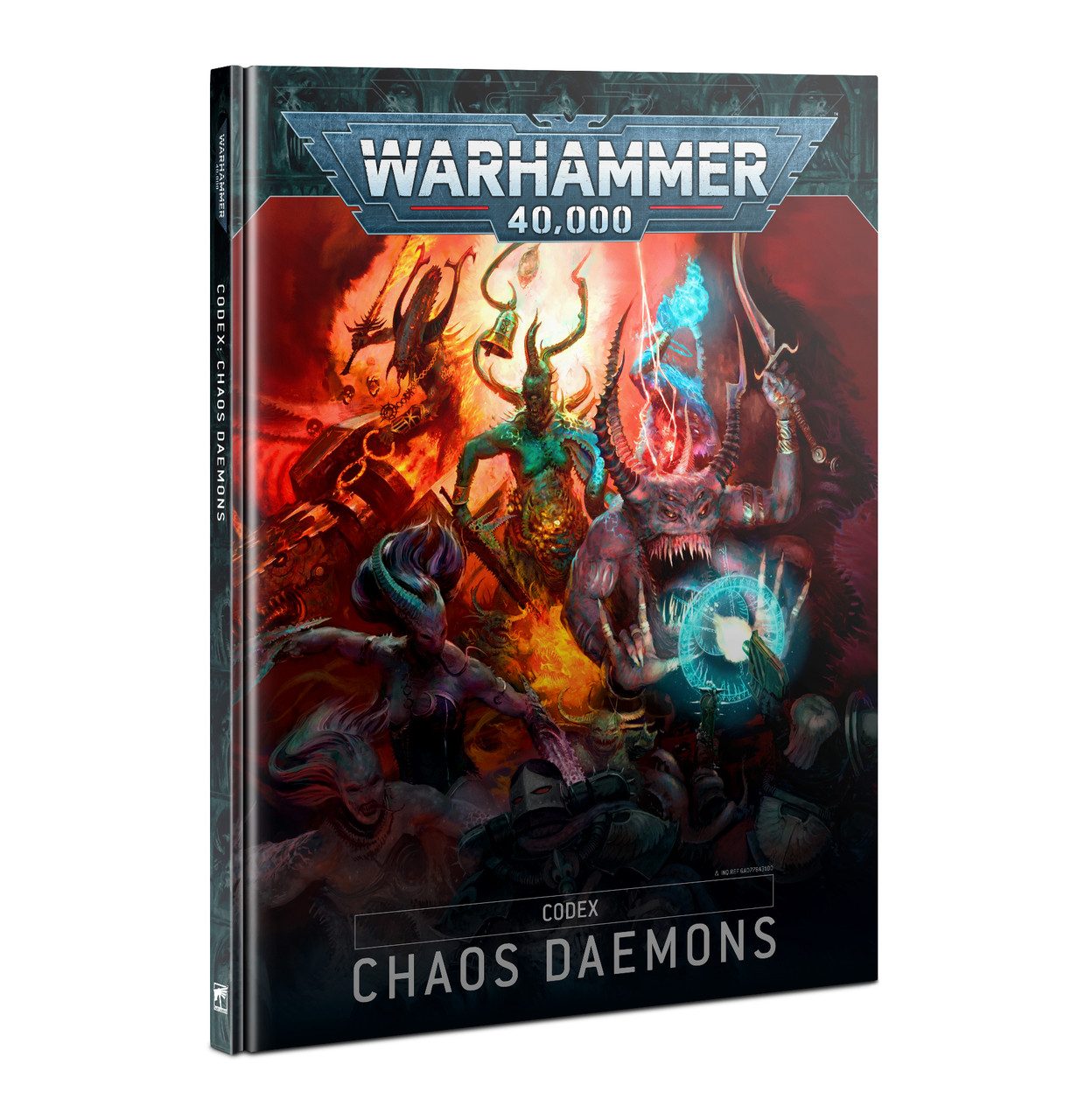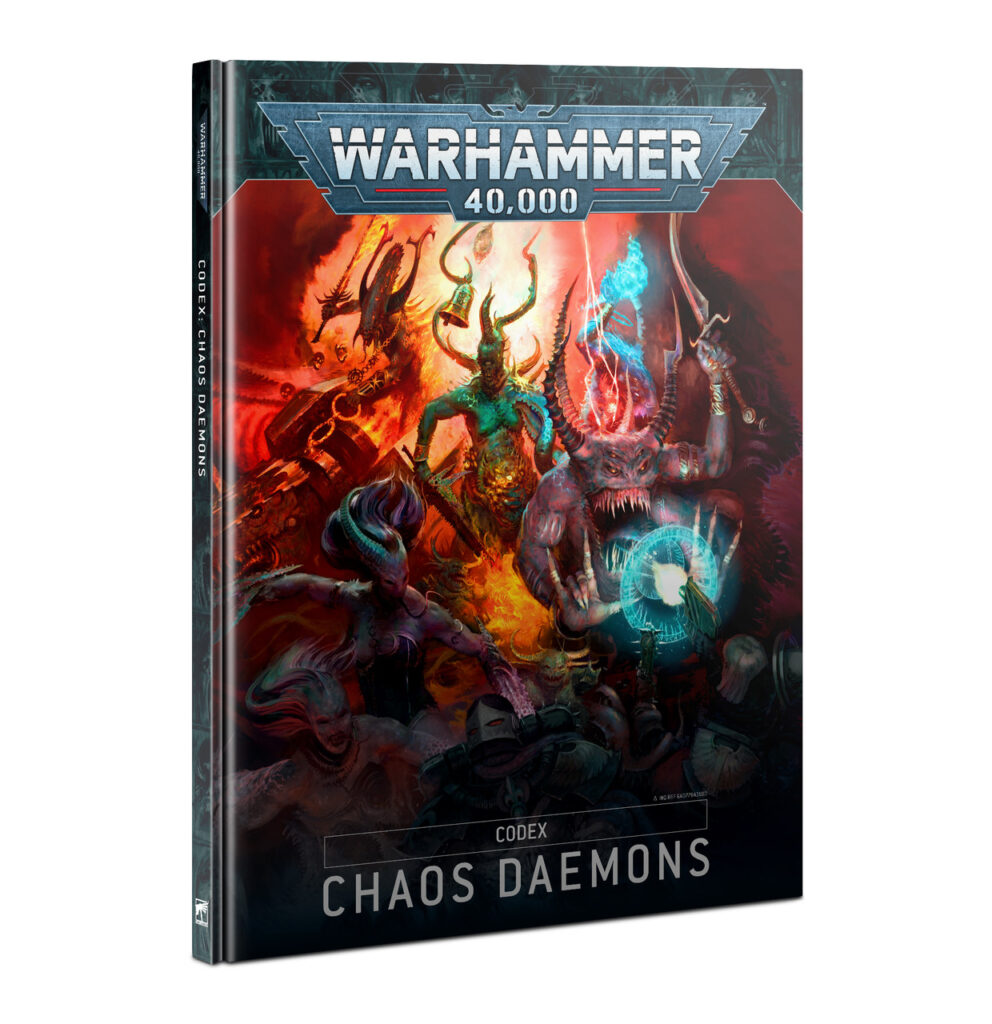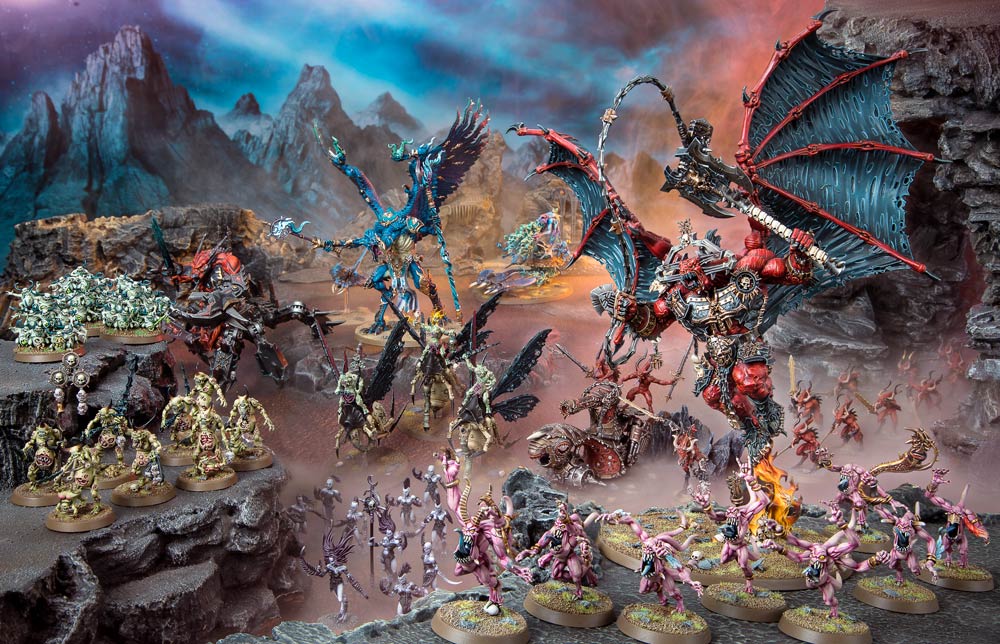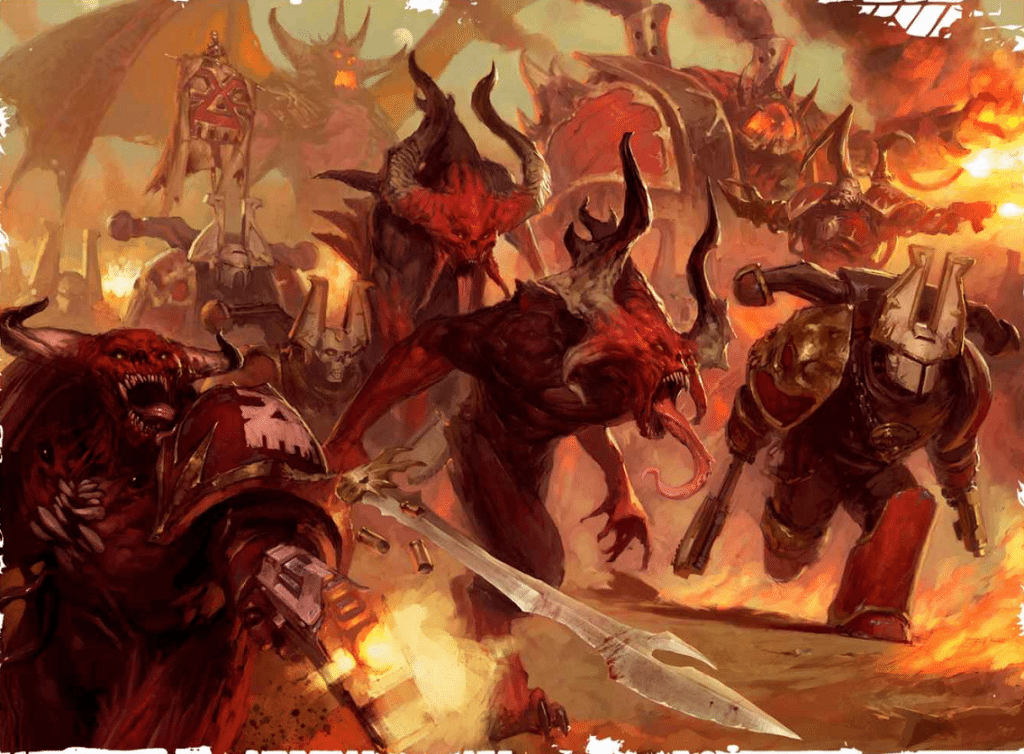Hi all,
The 40k crusade rules keep rolling out and so we continue to review them! Today’s topic is the new rules for the Chaos Daemons army.
Army Specific Rules:
True to their chaotic nature, the special rules for the daemons are all about one-upping other gods. Through your campaign you will keep a tracker for the four chaos gods. All chaos gods gain D3 points on the tracker after each battle, with the one that your warlord is aligned with getting +1. Through the first 8 games each god’s units will get a bonus depending on their ranking. While they are in first you get +1 Ld and a once-per-battle free Epic Deed strat for a unit of the same alignment. Second place gets +1 Ld and a free command re-roll, third place gets nothing, fourth loses 1 Ld but gets to re-roll hits against units of the other three gods (niche but fluffy).
After the first 8 games the rankings stop, and you calculate the final rankings for that round of the “Great Game”. Every unit aligned with the god who is in first gets 3 exp. and a greater daemon gets one reward of any type. Second place god units get 2 exp each and a greater daemon gets a greater or lesser reward. Third place units get 1 exp and a greater daemon gets a lesser reward. Fourth place gets nothing. After this you reset the initial rankings with first place starting with 4 ascendancy points and second with 3, etc. You repeat this cycle every 8 games until the campaign ends.
The rewards you can get are pretty good without being overwhelming. They largely act as army buffs granting you more Warp Storm rolls or stratagem options. There is one very good option in each level, and they do dramatically increase your crusade points for the unit.
Agendas and Relics:
There are five total agendas for you to choose from, one for each god and an undivided option. For Khorne you have to identify the three enemy units with the highest wound counts and each Khorne unit gets 2 exp for killing one of these models. The Tzeentch one is very good. You keep track of each of your units and they get 1 point each time they cast Smite, a witchfire power or kill an enemy unit in the psychic phase. At the end of the game, the unit that achieved this the most gets 3 exp, second most gets 2 exp., and third most gets 1 exp. The Nurgle agenda is an intriguing choice, if not great, mission. The first unit to kill an enemy unit in each table quarter gets 2 exp. While granting you a higher ceiling of experience points, it is more restrictive (still better then Khorne’s though). Slaanesh has one that is almost identical to Tzeentch but you track the units that killed enemy units on the turn they charged, or were charged. The last option grants every unit 1 exp every time it kills an enemy unit within 3″ of an objective or does an action on an objective outside your deployment zone. Interestingly enough, there is no limit to the number of times a unit can perform this action on one objective so you can have a back-line unit corrupt the dickens out of any objective, not in your deployment zone.
As expected, there are 8 relics available to the daemons, four antiquity and four legendary relics. While this is a high number, remember you won’t get access to these until late in the campaign. For the antiquity ones you get:
- Khorne: Ignore the first failed save
- Tzeentch: pick a unit within 12″ this unit is unaffected by enemy abilities
- Nurgle: At the end of your movement phase every enemy unit within 6″ takes a mortal wound on a 4+
- Slaanesh: +1 to psychic tests and deny rolls
Sadly most of these are quite bad, let’s take a look at the legendary relics:
- Khorne: You get a really good melee profile and when you die a Bloodthirster comes out! Amazing! While the Bloodthirster can disappear at the end of every fight phase on a 5+ this is still really good.
- Tzeentch: Powers that are cast on a 9+ are resolved twice, great for dealing damage!
- Nurgle: melee weapon that, on a wound roll of a “6” deals D3 mortal wounds, if it kills any models using this ability the unit takes another D3 mortal wounds. Good against hordes.
- Slaanesh: Grants 6 Warp Storm points and you know all Slaanesh psychic powers for one turn. A solid option
Army Traits and Requisitions:
The Daemons get a lot of upgrade tables. There are mini-tables for all of the main daemon troop units (Bloodletters, Plaguebeareres, etc.) All units get one option to use a strat for free, while the other choices are more diverse. The Bloodletters get some of the stronger choices including +1S or forcing enemy characters they kill to fail Out of Action tests on a 1-3. The Plaguebearers also get a solid option to increase their save to a 4+/4+. There are also psychic fortitude tables. Mini tables for Nurgle and Slaanesh and a full table for Tzeentch. The Slaanesh table is very useful allowing you to shut off overwatch or heal a wound when you cast a power. The Tzeentch is also quite strong granting re-rolls to cast, auto deny on a 9+, punishing your opponent for failing to deny and many other goodies. Lastly, there is a new type of battle honor called a Locus. Each Chaos god gets two options that have a range of 6″ on greater daemons and 3″ on heralds. Khorne grants additional consolidate range or auto-wounding on 6’s to hit. Tzeentch grants a 6+++ or the ability to re-roll psychic dice of a 1-2. Nurgle grants re-roll charges to Plaguebearers or -1 damage to core units. And Slaanesh grants advance and charge or +1 AP. These will be go-tos for your characters as they are amazing! You are restricted to one locus per model though.
The Daemon Requisitions are straightforward. The first gives you the mechanic to upgrade your greater daemons to exalted ones. Dark Gambit makes you risk the result of the battle. If you win the god you are aligned with gets +D6 ascendancy points rather than D3. However, if you lose the battle you get no ascendancy points. Monstrous Duel sees you pit two greater daemons from different gods against each other. You pick one to win, and that god gets 1-3 Ascendancy Points from the loser god in accordance to how many requisition points you spend. Ignoble Defeat is a funky mechanic that triggers when a character fails an Out-of-Action test. Another Greater Daemon binds that character to its weapon granting a bonus depending on the bound unit’s alignment. While bound that unit cannot take part in a battle and starts a “Bound” tally. This tally comes into effect in the next requisition which you can use to unleash the bound model. You can spend 2 RP to release the daemon which removes the bonus to the other daemon’s weapon but you get 1 exp for the freed unit for every tally in its “Bound Tally”.
Conclusion:
There are a lot of weird rules and interactions to digest in this book. Overall I like the mechanics they have introduced, especially as they focus on making the Greater Daemons force multipliers and linchpins of your army. I think this army is solidly in B-tier to lower A-Tier in terms of how it will operate in a campaign. I am not seeing a lot to make me worry as a GM. Their mechanic is powerful, but it takes 8 games to fire which is a lot in a crusade system. I like that they didn’t introduce any mechanics that side-step traditional restrictions imposed in the Crusade rules and hope this hold for the foreseeable future.
And remember, Frontline Gaming sells gaming products at a discount, every day in their webcart!







